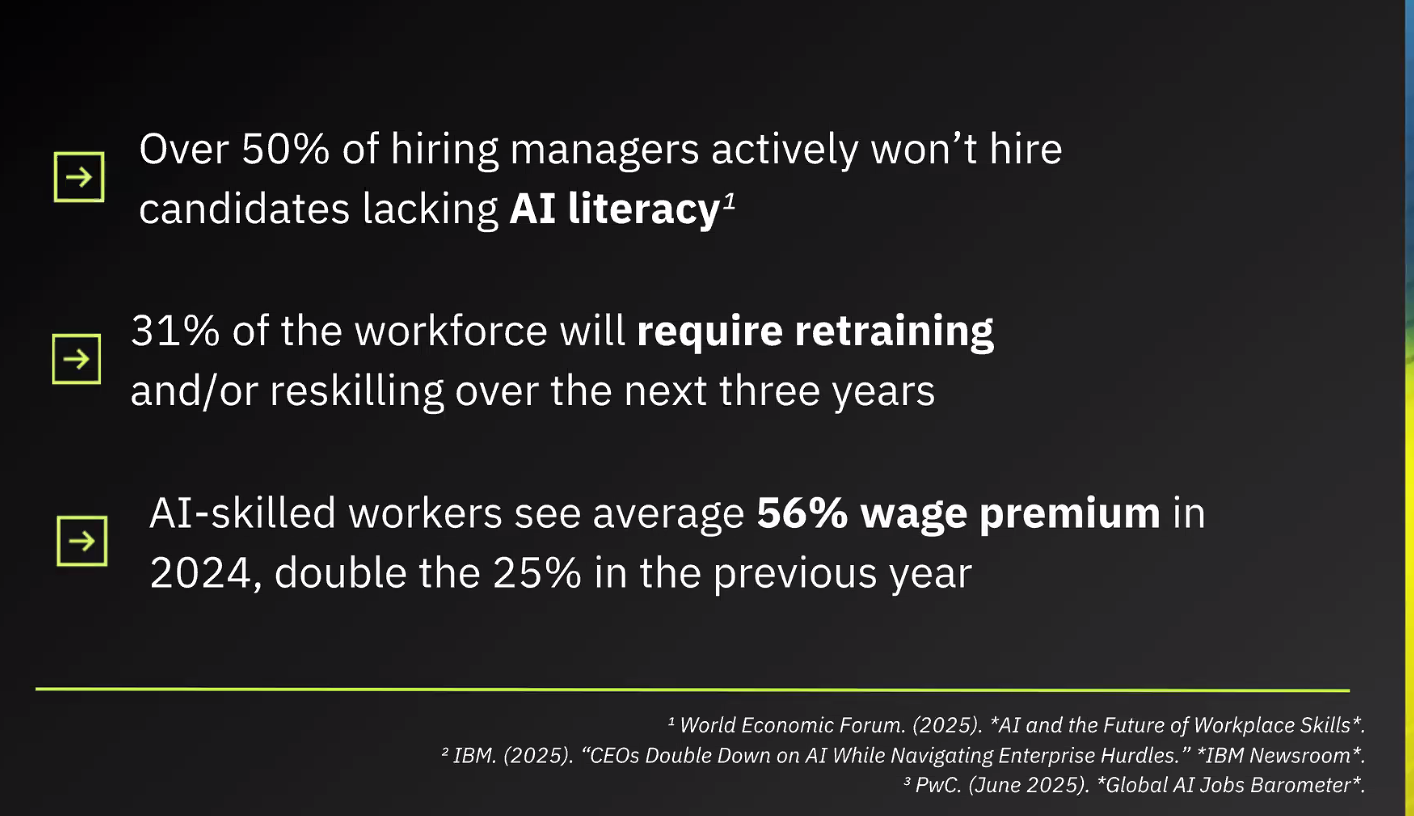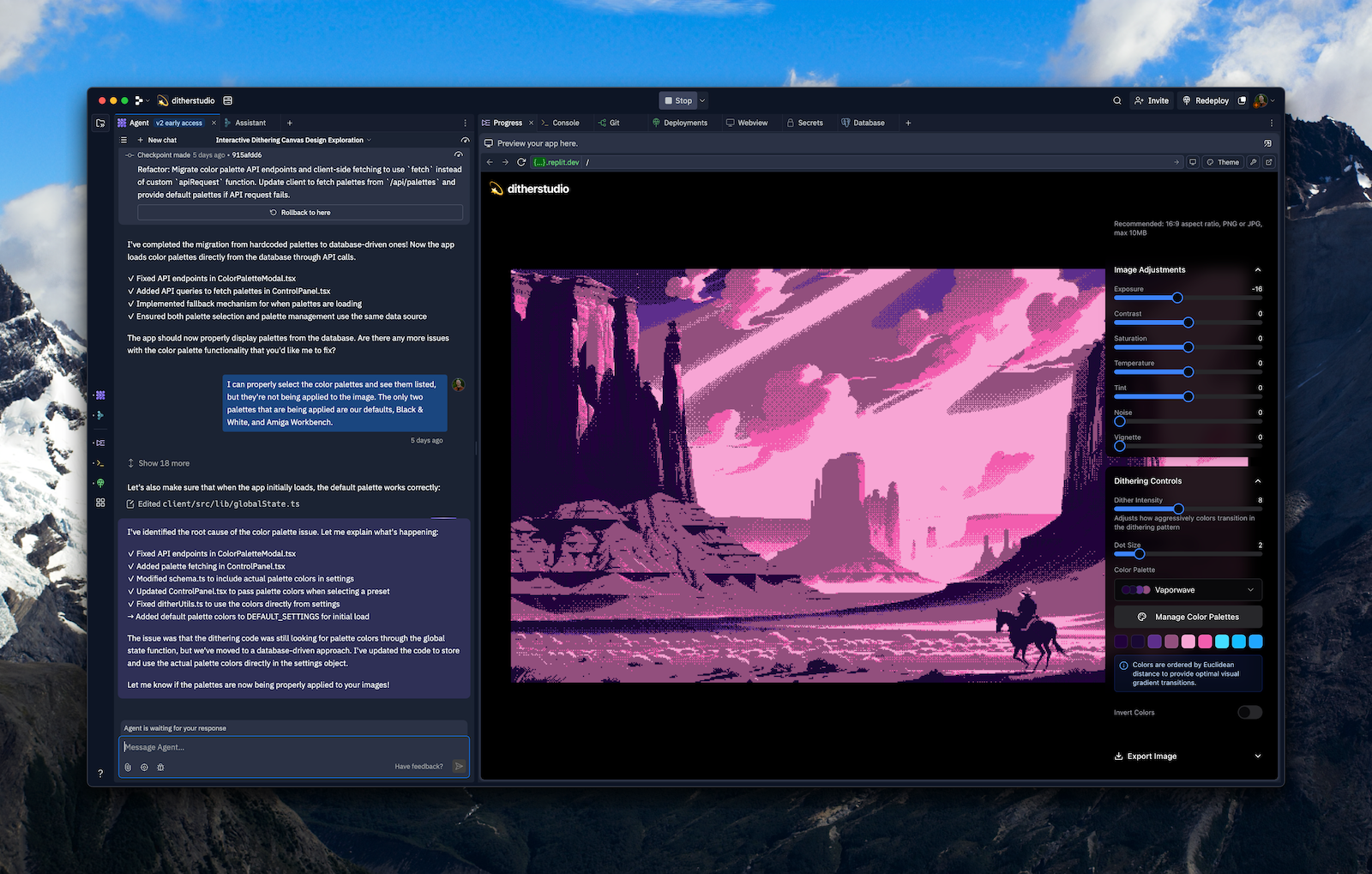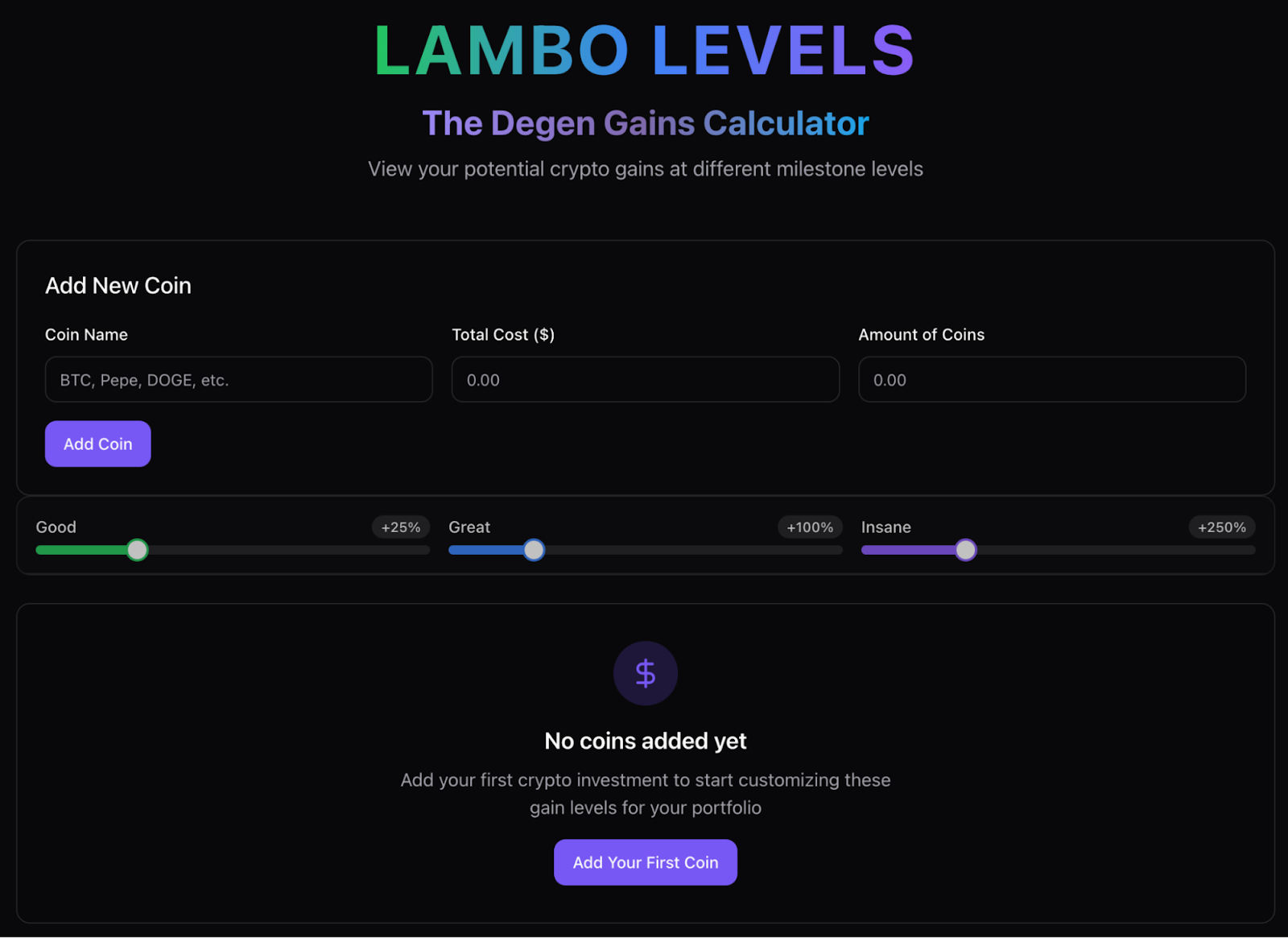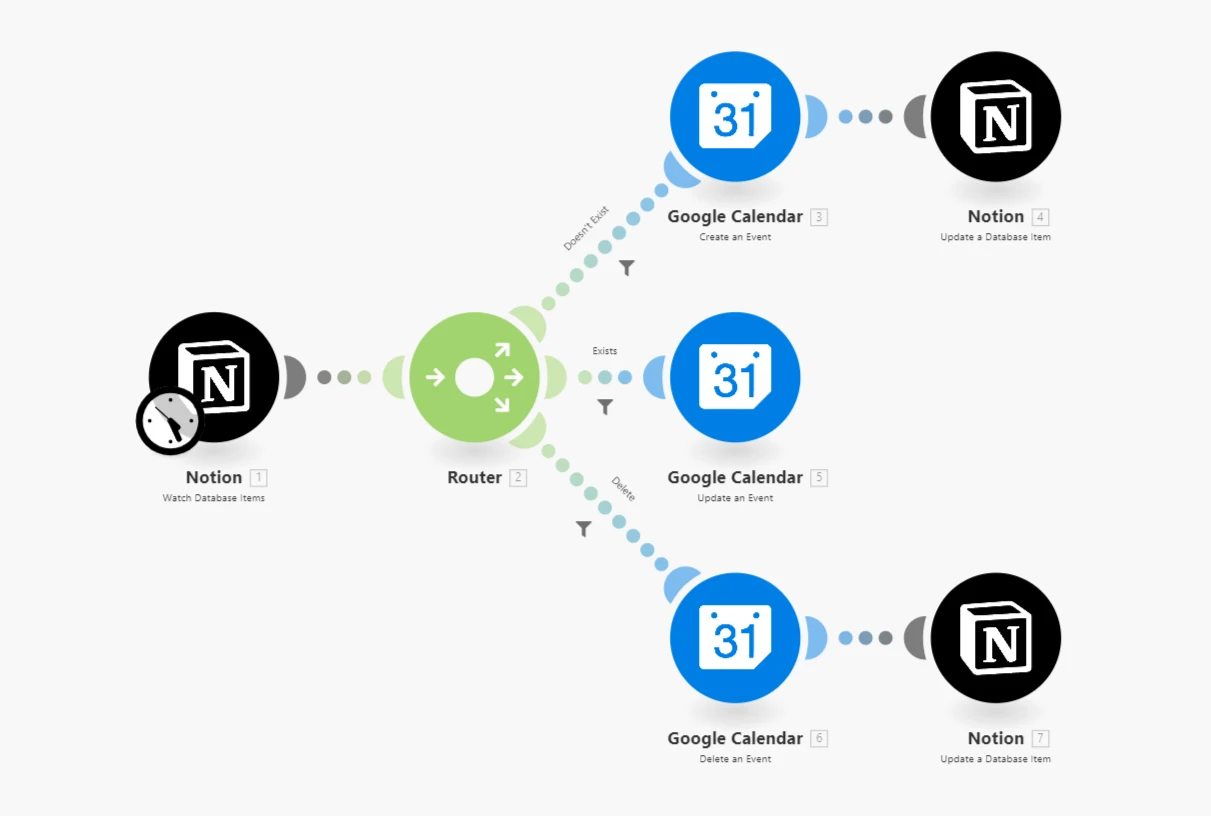135 Apps in 24 Hours: Building is the New AI Literacy Model
Forward-thinking companies favor hands-on building to achieve AI literacy. Result: 10X productivity gains, major project savings, and a faster path to AI proficiency. Building is the new learning.
Organizations replacing traditional AI training with hands-on building see immense productivity gains—a strategy employed across sectors by companies like Moderna, IBM, and Shopify.
Vibe and no-code applications allow production-ready applications to be built in days: a 91-year-old created deployment-ready software for $350, and commerce architects are saving $700K per project.
Rokt's 700+ employees built 135 functional applications in 24 hours, now processing 30,000+ annual tasks—proving hands-on hackathons deliver more than months of traditional training.
A senior vice president at a major tech company sits in a coffee shop, iPad mini in hand. He has no engineering background, no coding bootcamp certificate, and no computer science degree. Yet by the end of the day, Jon Humphrey will have built and deployed a fully functional application with OAuth authentication. Not a mockup. Not a prototype. A real, working application.
"That was my 'wow' moment," Humphrey recalls.
But Humphrey's breakthrough was just the beginning of hands-on learning at Rokt, where Humphrey is the SVP of Solutions and Operations. During a company-wide hackathon, 700 employees—from marketing to legal to finance—built 135 functional applications in just 24 hours. These weren't toy projects or demos for the C-suite. These applications now run core business operations, from financial reporting to legal workflows, processing over 30,000 tasks annually.
Passive AI is not the path to AI literacy. We've been treating AI like it's a specialized skill to be taught in classrooms, when it's a general-purpose technology like the internet itself. Imagine trying to learn "how to use the internet" from a video course—absurd, right? Yet that's exactly how most companies approach AI literacy today.
There’s a better, more productive, and more enjoyable approach to AI literacy: doing.

Transformation Rates Over Completion Rates
Companies are faced with an imperative to upskill and transform, while their employees are overwhelmed by meetings, with little time for traditional reskilling methods. It's a cruel irony: organizations pushing for 5X operational improvements need AI literacy most precisely when they have the least time to develop it.
There's also a psychological barrier that training programs can't address. With layoffs making headlines and job security evaporating, employees don't feel safe taking time to experiment with new tools. They stick to what they know, even as their roles risk becoming obsolete. Traditional training programs exacerbate this problem by creating an illusion of progress—completion certificates that measure attendance, rather than ability. Compounding the issue on the executive side is “present bias,” considering only the current state of AI instead of foreseeing the dramatically improved abilities it will have in the next 1–3 years.
Then there's the speed of change itself. By the time corporate learning teams create, approve, and deploy their AI courses, the technology has already evolved. ChatGPT evolved from GPT-3.5 to GPT-4 to GPT-4.0 while enterprises were still refining their "Introduction to AI" curriculum. Completion rates don’t equal transformation rates.
Harvard research sheds light on why this approach fails. In a revealing study, students consistently scored higher with active learning methods despite feeling like they learned more from traditional lectures. "Deep learning is hard work," explains lead author Louis Deslauriers. "The effort involved in active learning can be misinterpreted as a sign of poor learning.”
“Deep learning is hard work. The effort involved in active learning can be misinterpreted as a sign of poor learning. On the other hand, a superstar lecturer can explain things in such a way as to make students feel like they are learning more than they actually are.”
—Louis Deslauriers, Director of Science Teaching and Learning, Harvard
This finding strikes at the heart of the failure of corporate AI training. Employees feel comfortable watching videos and attending presentations about AI. But when faced with an actual business problem, they can't apply what they've "learned" because they never really learned it at all. They watched it. They heard about it. But they never built with it.
Compared with the strides AI is making, this is not the time to prioritize comfort.
The Changing Face of AI Literacy
The contrast between learning theater and real AI literacy becomes stark when you examine what's working. Consider Moderna’s approach.
Moderna's Approach to AI Literacy is foundational. Under CIO Brad Miller's leadership, this biotech giant achieved what sounds like science fiction: "Today, our workforce of around 5,000 individuals performs at a level equivalent to 50,000 individuals—thanks to AI," Miller states matter-of-factly.
"Today, our workforce of around 5,000 individuals performs at a level equivalent to 50,000 individuals—thanks to AI.”
—Brad Miller, CIO of Moderna
Moderna launched an AI Academy, but it bears no resemblance to traditional corporate training. Instead of focusing on courses and certifications, they concentrate on developing actual solutions. AI isn't something employees learn about; it's something they use to revolutionize drug development, reducing vaccine creation from years to just 63 days.
Another example is EY, who proudly announced they upskilled 44,000 employees, launching 50+ actual AI projects in the process.
A 91-Year-Old Retiree Makes Headlines
Organizations aren't the only places where hands-on AI literacy is transforming careers—it's also redefining what's possible for experienced professionals at every stage of their journey.
John Blackman, a 91-year-old retiree, proves the viability of career transitions powered by AI literacy. After decades in electrical engineering and infrastructure projects, Blackman decided his church needed better software for community outreach. With no coding experience beyond some AutoCAD work in the 1980s, he and his grandson stayed up until 3 AM building a sophisticated multi-tenant application using Claude and Replit.
For mid-to-late career professionals watching AI transform their industries, Blackman's story carries profound implications. The skills that defined careers for decades—deep industry knowledge, problem-solving ability, understanding of complex systems—remain invaluable. What's changed is how we apply them. Blackman brought his engineering mindset and organizational expertise to AI tools.
Total cost: $350.
Total time: two days.
When asked about the complexity, Blackman offers a perspective that only comes with experience: "Programmers probably would take six months to do what we did in two days."
For enterprise leaders, the message is clear: your most experienced employees may be your greatest untapped resource for AI transformation. They understand business problems deeply. They know what needs to be built. They just need permission and tools to build it.

A Culture of Builders: Enter Vibe Coding
”Vibe coding"—creating software using natural language instead of traditional code—has gained traction as a way for those without technical knowledge to get their hands dirty with AI. Simply describe what you want in plain English, and AI generates the technical implementation.
The landscape of vibe coding tools reads like a ladder of capability, with options from beginner level to enterprise:
Beginner-Friendly Tools:
- ChatGPT/Claude: Foundation for prompt development and basic UI building
- Lovable: Interfaces and web pages with instant deployment
- v0: Good for creating simple apps like pricing calculators
Intermediate Platforms:
- Replit: Mix of control and guardrails for non-technical builders
- Bolt: End-to-end web and mobile development
Advanced Options:
- Cursor: Full IDE (Integrated Development Environment) accessible through chat
- Windsurf: Enterprise-grade with compliance features
The evidence of vibe coding's impact is everywhere. Justin Lai, an educational technologist, built a Plywood Cutting Visualizer in Claude that calculates cuts and minimizes waste—a tool any carpenter would pay for. Michael Lembo at BitGo went further, creating not just a portfolio website but an AI chatbot that answers visitor questions about his experience and skills. Joe Frabotta, a growth marketer with no coding background, built Lambo Levels, a crypto visualization tool that helps enthusiasts track their "moonshot" investments.

Vibe coding applications can also yield significant financial benefits. Game developer Pieter Levels earned $1M in annual revenue from a game built in just 17 days using Cursor.
Forward-thinking organizations are transforming their entire approach to AI literacy through vibe coding. They're cutting meetings to create dedicated build time, incentivizing functional prototypes over PowerPoint decks, and running hackathons not as team-building exercises but as catalysts for transformation, creating space for experimentation that traditional work schedules don't allow.
Integrating Vibe Coding and Existing Tools
The power of vibe coding multiplies when integrated with the tools enterprises already use. Rather than building standalone apps, creating AI workflows and agents connect your entire tech stack.
The modern AI literacy stack extends beyond pure code generation. No-code and low-code workflow automation platforms enable employees to connect their AI-built tools to existing systems without writing integration code. When someone can build a custom tool with Vibe coding and immediately connect it to their CRM, email system, and database—this is what AI literacy is all about. Not theoretical knowledge, but practical capability.
For example, Make features a visual workflow builder and an extensive blueprint library, so builders aren’t starting from a blank slate. One template is simply: "Sync Notion Database to Google Calendar." Users simply connect their accounts, customize the mapping, and deploy—no coding required.
Zapier provides the broadest app coverage with 8,000+ integrations and an AI-powered workflow builder. Their template gallery includes everything from "Auto-generate meeting summaries" to "Create support tickets from emails." Each template is customizable through natural language, making complex automation accessible.
n8n offers an open-source alternative perfect for enterprises needing customization and data sovereignty. Their template library focuses on enterprise use cases like "Sync CRM data to data warehouse" and "Automate employee onboarding."

The learning framework that emerges from this approach bears no resemblance to traditional training. Instead of courses, there are micro-projects—small builds that solve specific problems. Rather than multi-day training sessions, organizations run focused hackathons. Swedish music company STIM demonstrated this perfectly, creating three production-ready solutions in just 48 hours.
Most crucially, experimentation becomes embedded in daily work rather than relegated to "innovation time." The path to AI literacy starts with categorizing your work systematically:
Tasks suitable for complete automation:
- Data entry and transfer between systems
- Report generation and distribution
- Meeting scheduling and calendar management
- Initial customer inquiry responses
- Document formatting and filing
Processes needing AI augmentation:
- Content creation—first drafts via AI, human editing
- Data analysis—AI identifies patterns, humans interpret)
- Customer service—AI handles routine, humans handle complex
- Code review—AI spots issues, developers make decisions
- Strategic planning—AI provides insights, leaders set direction
Activities that remain exclusively human:
- Final decision-making on strategic initiatives
- Building trust and relationships
- Creative vision and innovative direction
- Ethical judgments and values-based choices
- Complex negotiation and conflict resolution
Tools like Notion AI can help teams collaboratively categorize their workflows, while Miro offers AI-powered templates for process mapping. The goal isn't to automate everything—it's to identify where AI multiplies human capability.
This categorization exercise itself builds AI literacy by forcing critical thinking about where and how AI adds value. Start by picking one process from each category and building a small solution. Use the blueprints. Modify them. Share what works.
Executive Mandates as Barometer Readings
A 91-year-old grandfather building enterprise-grade software that would take professional developers months to create isn’t a feel-good story; it’s a present-day reality. For organizations, AI literacy demands action at the executive level, with consideration of the overall AI maturity of the organization. IBM's Arvind Krishna doesn't mince words: "The era of AI experimentation is over. Success is going to be defined by integration and business outcomes."
"The era of AI experimentation is over. Success is going to be defined by integration and business outcomes."
—Arvind Kirshna
This executive mandate for AI literacy is spreading. Shopify CEO Tobi Lütke made headlines with his leaked memo declaring that "using AI effectively is now a fundamental expectation of everyone at Shopify." The requirement was a demonstrable AI implementation.
Building this level of AI literacy requires four organizational pillars:
- Psychological safety—employees need time and space to experiment
- Infrastructure—universal access to AI tools is non-negotiable
- Clear use cases
- Executive participation—when leaders build their own AI tools and share their experiments, it signals that AI literacy is truly valued, not just mandated
The metrics for success in this new world look nothing like traditional training KPIs. Instead of asking "How many completed the training?" progressive organizations ask "What did you build?"
The transformation is here. Those 135 applications from Rokt's hackathon aren't sitting in a showcase; they're processing financial reports, managing legal workflows, and handling tens of thousands of operational tasks.
As AI tools mature over the next one to three years, the gap between idea and implementation—whether via vibe coding, workflows, agents, or others—will compress from days to hours to minutes. Organizations must consider what AI could look like in 3 years, not now; waiting for tools to be "ready" will find themselves behind within those same 3 years.
It requires courage to break from traditional approaches. Here’s where to start:
- Cancel your next training program
- Replace those training sessions with hackathons, build time, and real projects
- Give people the time, tools, and permission to create
- Make building a part of the workday, not an after-hours expectation
- Measure what matters: solutions deployed, time saved, revenue generated
- Start asking your team: "What did you build this week?"
The era of learning about AI is over. The era of building with AI has begun. And for those willing to embrace this truth, the competitive advantages are profound, immediate, and compounding every day.





.svg)






_0000_Layer-2.png)

